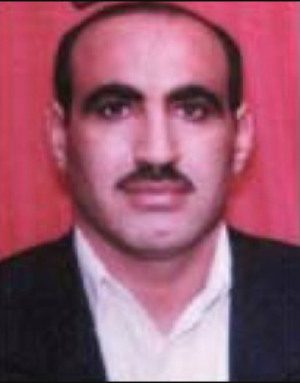As Sahab, the propaganda arm for al Qaeda’s senior leadership, has released a two-page eulogy for Abu al Khayr al Masri. The US killed Masri in a drone strike in Idlib, Syria in late February. [See FDD’s Long War Journal report, Zawahiri’s deputy sought to ‘unify’ Syrian rebels.]
Al Qaeda praises Masri as a “martyr,” saying he was targeted in a “crusader raid” in Syria.
Masri’s jihadist journey lasted nearly “three decades.” During this time he suffered “many calamities and tribulations,” including the “plight of prison.” But al Qaeda praises Masri for his “toughness and determination” to continue on the jihadist path despite these setbacks and his illness.

Eventually, Masri (seen in the dated photo on the right) traveled to Syria, where he joined the fight against Bashar al Assad’s regime and its “associates.” (Al Qaeda uses the derogatory word “Nusayris” to refer to Assad’s regime and its supporters.)
Once in Syria, Masri was “honored” to oversee “combat operations” in the insurgents’ “management and planning rooms.” Along with its allies, al Qaeda has established numerous joint operations rooms in Syria.
In 2016, Masri oversaw the rebranding of Al Nusrah Front, the largest paramilitary force in al Qaeda’s history. He also worked to unify rebel groups in Syria.
According to al Qaeda’s eulogy, Masri was among the “first Arab immigrants” in Afghanistan, where he joined the likes of Abdullah Azzam (the godfather of modern jihadism in the 1980s) and Sheikh Omar Abdel Rahman (an influential ideologue who recently passed away in an American prison). Al Qaeda says Masri has now joined the company of Taliban founder Mullah Omar (who died in 2013), Mullah Mansour (who served as Omar’s successor as Taliban chief, but was killed in an American airstrike in 2016) and Abu Hafs al Masri (who was al Qaeda’s military chief until his demise in late 2001).
Al Qaeda’s eulogy also highlights Masri’s relationship with Osama bin Laden, saying the two worked closely together in Afghanistan.
Masri served as al Qaeda’s “representative” in “meetings with the Islamic Emirate,” meaning the Afghan Taliban, according to the eulogy.
This confirms a detail first reported by the Washington Post, which noted that Masri formerly served as “chief of foreign relations for al Qaeda, including liaison to the Taliban.” The US Treasury Department also said in 2005 that Masri “was responsible for coordinating al Qaeda’s work with other terrorist organizations.”
Two al Qaeda branches, Al Qaeda in the Arabian Peninsula (AQAP) and Al Qaeda in the Islamic Maghreb (AQIM), confirmed Masri’s death in a joint statement released on Mar. 2. Both AQAP and AQIM remain openly loyal to Ayman al Zawahiri.
Shabaab, al Qaeda’s branch in Somaila, released its own eulogy for Masri on Mar. 4. Shabaab’s command offered its condolences to the “emir” Zawahiri.
In July 2016, Masri was identified as Zawahiri’s “general deputy.” Masri was one of a number of Egyptian Islamic Jihad (EIJ) veterans, including Zawahiri, who have gone on to hold key leadership positions in al Qaeda. Masri was a member of the EIJ’s elite shura (or consultation) council. The EIJ effectively merged with bin Laden’s operation in the 1990s, when the two colluded on a number of terror plots, including the 1998 US Embassy bombings in Kenya and Tanzania.
Al Qaeda’s eulogy repeats the group’s pledge to continue waging jihad despite losing its leaders along the way. Al Qaeda has made the same promise after losing key figures in the past.







